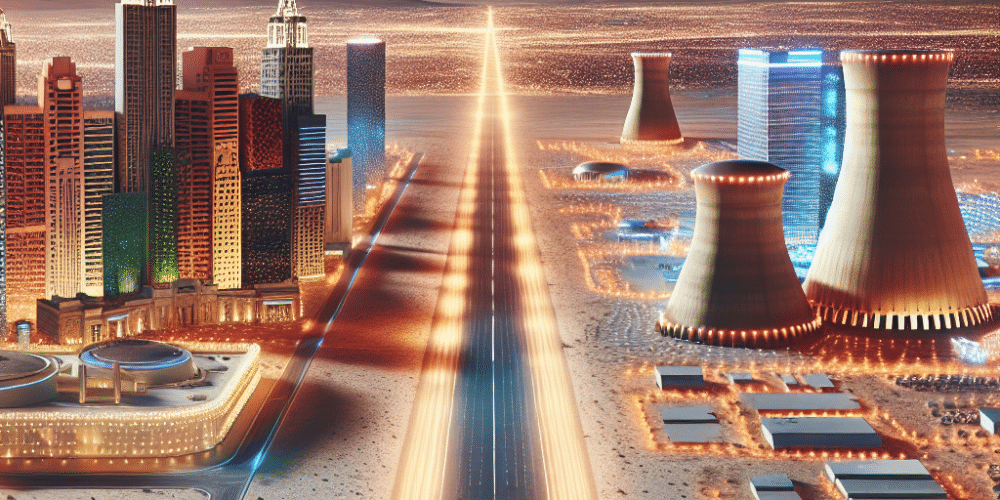President Donald Trump has reignited a heated debate by expressing his intention to resume nuclear weapons testing near Las Vegas, Nevada. In a bold move, he made this declaration just before a significant meeting with Chinese President Xi Jinping, highlighting the urgency he places on demonstrating military strength. “I have instructed the Department of War to initiate testing of our Nuclear Weapons in response to other nations’ programs,” Trump announced on his Truth Social platform, underscoring that the United States holds the largest nuclear arsenal, with Russia and China trailing behind.
This proclamation immediately sparked a political firestorm. Nevada officials and residents, who have a long and fraught history with nuclear testing, have voiced strong opposition. “This is unacceptable,” stated Nevada Democratic US Rep. Dina Titus, promising to introduce legislation aimed at halting any such efforts. Her sentiments were echoed during an Armed Services Committee hearing where Sen. Jacky Rosen, also a Democrat from Nevada, warned that resuming nuclear tests would be “devastating and catastrophic.” She vowed to use her position and influence to protect Nevada from becoming a testing ground once again.
Rep. Steven Horsford, representing the district that includes the Nevada National Security Site, emphasized Nevada’s historical contributions and sacrifices related to nuclear weapons testing. He argued that the state has borne enough and that further testing would ignore its lasting impacts. “It’s not just a political issue; it affects every community,” he insisted, citing the sufficiency of current subcritical tests and computer modeling for data gathering.
The Nevada National Security Site, previously known as the Nevada Test Site, encompasses around 1,350 square miles of desert landscape. Since its establishment, it has been central to America’s nuclear testing history, beginning with an atmospheric test in January 1951. These tests became a part of local culture, with “atomic viewing parties” in Las Vegas, but were halted with the Partial Test Ban Treaty in 1963, leading to underground testing until 1992. However, the legacy of these tests is enduring, with the land remaining contaminated and health impacts lingering among populations exposed to radiation fallout.
The opposition is not solely based on past experiences but also on contemporary concerns. The fallout from atmospheric tests historically led to increased cancer rates, affecting not only Nevada but also neighboring regions like Utah. A 1984 medical report highlighted the widespread health effects, including higher rates of serious illnesses linked to radioactive exposure.
The site has also been a focal point for anti-nuclear activism. Government records document 536 organized protests against nuclear testing activities there, with tens of thousands participating and many arrested. This resistance underscores the public sentiment deeply rooted in the collective memory of Nevada’s communities.
Despite these vehement objections from local leaders and citizens, some defense and military experts argue that renewed testing could provide valuable insights into the reliability of aging nuclear arsenals. They suggest that technological advancements might mitigate environmental and health risks, potentially making nuclear tests less hazardous than in the past. However, this perspective is met with skepticism from those who prioritize public health and environmental safety over strategic military advantages.
The debate touches on broader themes of national security and international diplomacy. Proponents of testing argue that demonstrating nuclear capabilities could strengthen the United States’ position in global negotiations, particularly with countries like Russia and China investing heavily in their nuclear programs. Critics, however, fear that this could trigger a new arms race, undermining decades of efforts towards nuclear non-proliferation.
As the discourse unfolds, the stakes remain high for Nevada and its residents, who are all too familiar with the destructive potential of nuclear tests. They call for cautious consideration of the socio-economic and environmental consequences that such activities could entail. For now, the question looms large: will President Trump’s push for nuclear testing be curtailed by legislative and public resistance, or will it mark a new chapter in the United States’ nuclear strategy? The answer may depend significantly on political dynamics and public advocacy efforts in the coming months.

















